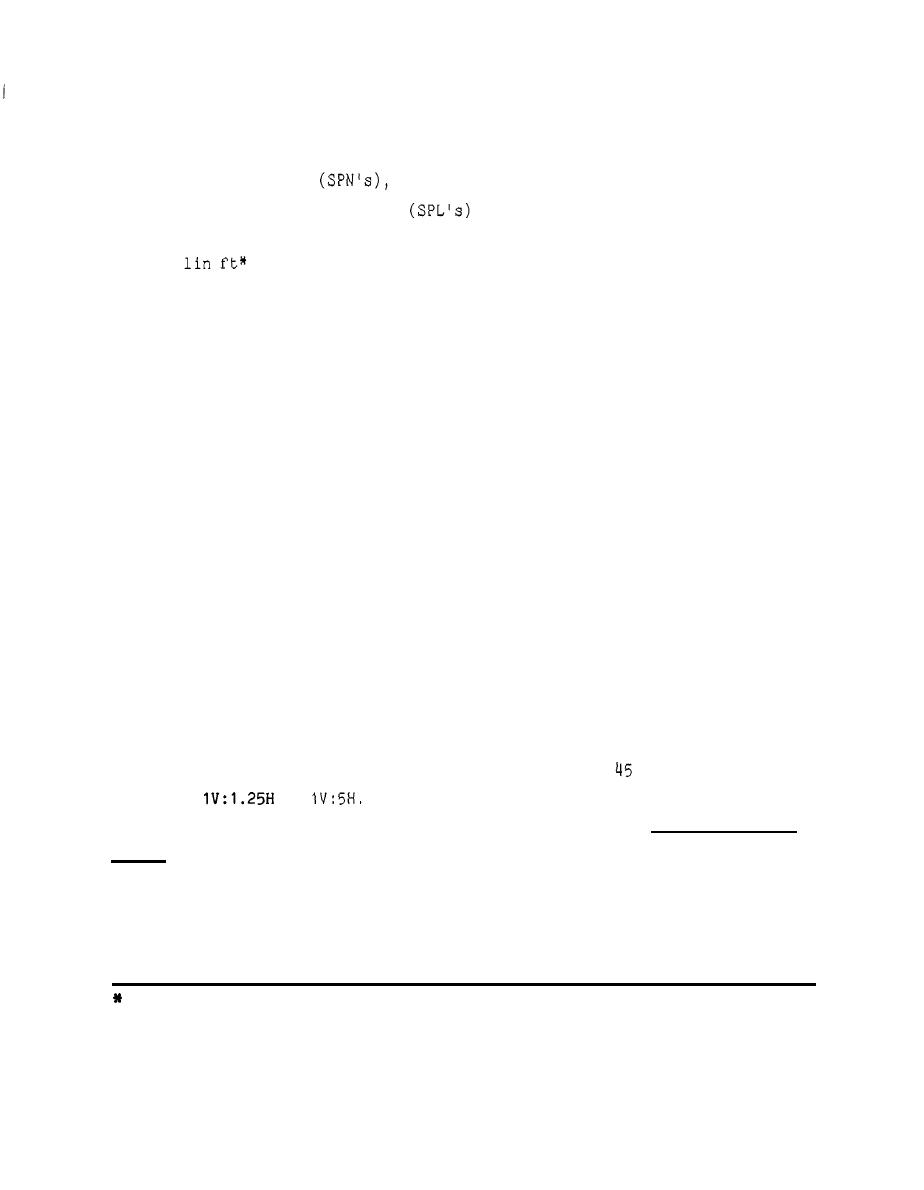
PART 11: SUMMARY OF CORPS BREAKWATER
AND JETTY STRUCTURES IN SPD
3.
SPD has a total of 28 projects which include breakwater and/or jetty
structures. Fourteen of these projects are within the US Army Engineer Dis-
4
trict, San Francisco's
area of responsibility. Locations of
Engineer District, Los Angeles's
these projects are shown in Figures 1 and 2. Overall, there are approximately
171,870
of breakwater and/or jetty structures in the Division. Break-
waters account for about 60 percent of this total, and the remaining 40 per-
cent are jetty structures. Although a variety of construction methods and
materials have been used, most of the structures (97 percent) are constructed
units (dolosse, tetrapods, tribars, quadripods), concrete blocks, concrete
sheet pile, and concrete monolith walls and head sections.
4. Twenty-one of the projects are situated in an ocean environment, and
seven are located in the San Francisco Bay area. Many of the Pacific Ocean
structures are periodically subjected to very severe storm wave conditions
which have resulted in frequent maintenance and/or modifications at some
locations, Structures within SPD have experienced problems in all four major
REMR problem areas (runup and overtopping, localized damage, toe stability,
and use of dissimilar armor). Twenty-one of the Division's 28 projects have
been repaired or modified since construction.
5. Most breakwaters and jetties in SPD have been constructed on top of
existing sediments (usually fine to coarse sand); however, portions of some
structures are constructed on bedrock. These structures have crest elevations
ranging from 1 to 26 ft and crest widths ranging from 6 to 26 ft, and they
0
have been constructed in water depths ranging from 8 to
ft. Side slopes
to
Design guidance for breakwater cross sections
vary from
(stone sizes, crest height, width, etc.) is provided in the Shore Protection
Manual (1984) or appropriate CE engineering manuals. Several of SPD's proj-
ects have been model tested at the US Army Engineer Waterways Experiment
Station (Baumgartner, Carver, and Davidson 1985; Baumgartner, et al. 1986;
Bottin, Sergeant, and Mize 1985; Bottin and Acuff 1985; Bottin (in prepara-
tion) ; Brasfeild 1965; Brasfeild and Ball 1967; Carver 1984; Chatham 1968;
A table of factors for converting non-SI units of measurement to SI (met-
6




 Previous Page
Previous Page
